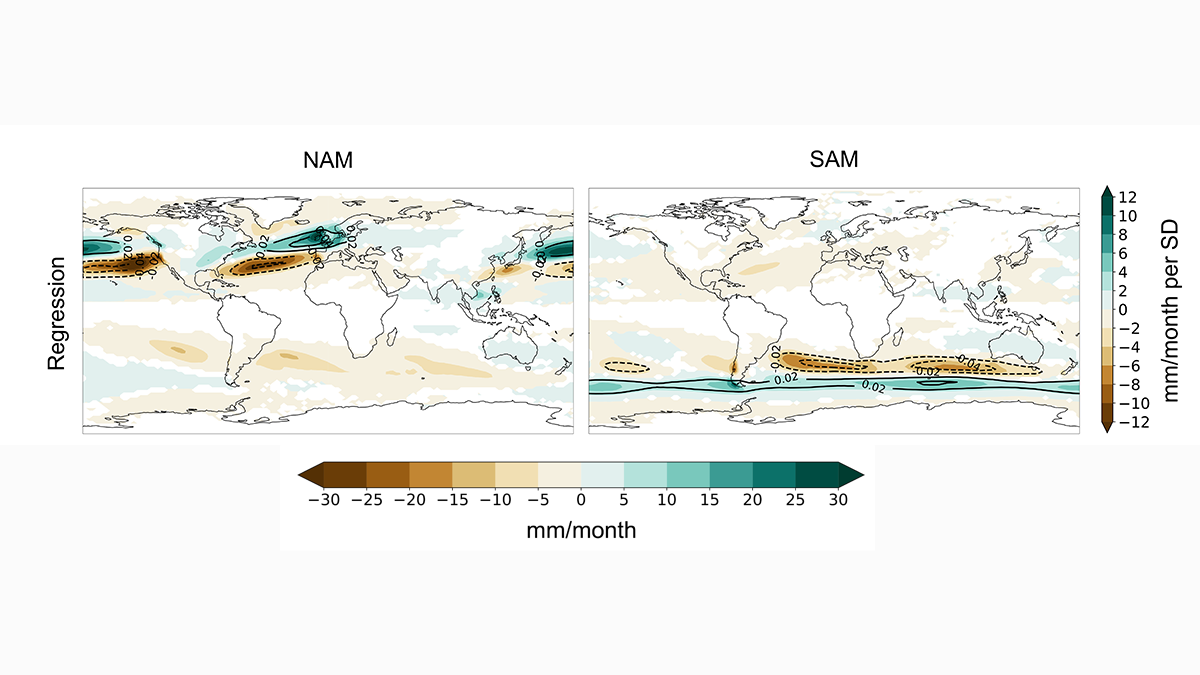Source: AGU Advances
Editors’ Highlights are summaries of recent papers by AGU’s journal editors.
Atmospheric rivers (ARs), filamentary structures of intense moisture transport, are critical for extratropical water cycle with important implications for a water resource and flood risk management. Although ARs operate primarily in the extratropics, how they respond to extratropical variability remains poorly understood. Baek et al. [2022] examine how annular modes of extratropical variability – north-south displacements in midlatitude zonal winds – influence the AR variability in Last Millennium simulations. Positive phases of annular modes in both hemispheres, characterized by a poleward-shifted midlatitude jet, intensify and increase the frequency of subpolar ARs while weakening and decreasing the frequency of subtropical ARs, with opposite influences for negative phases. Considerable influence into the other hemisphere is also reported, albeit weaker for southern annular modes. The primary effect of the annular modes elucidated here implies that annular mode forecasts can help improve the prediction skill of AR activity on subseasonal-to-seasonal timescales.
Citation: Baek, S., Battalio, J., & Lora, J. [2022]. Atmospheric river variability over the last millennium driven by annular modes. AGU Advances, 3, e2022AV000834. https://doi.org/10.1029/2022AV000834
—Sarah Kang, Editor, AGU Advances

